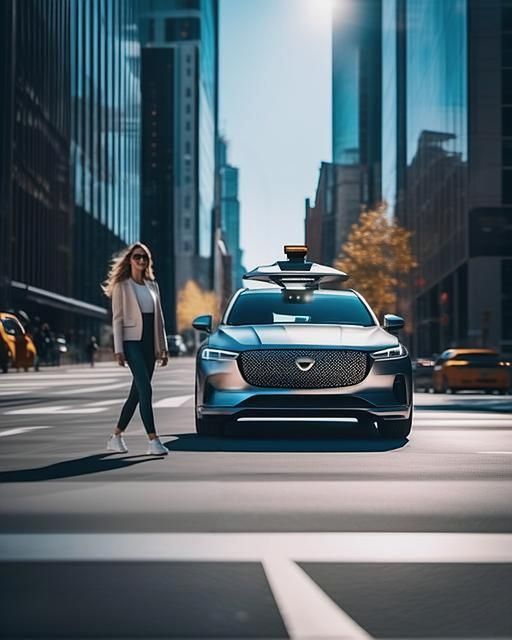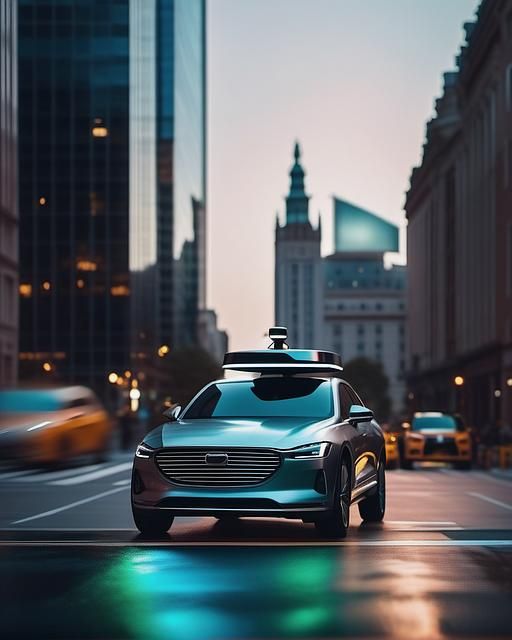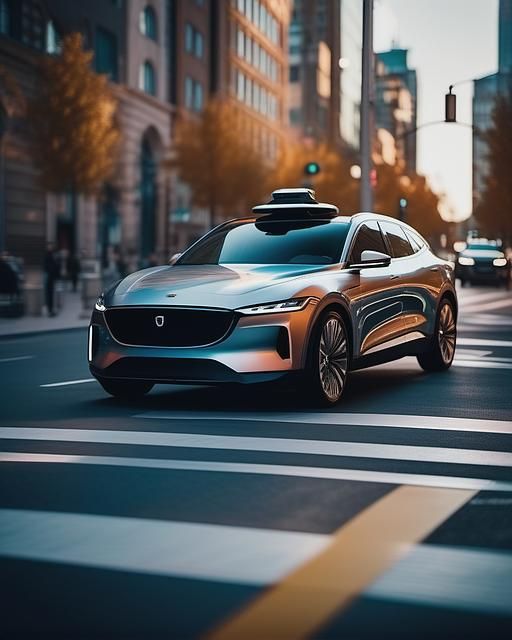How are GPU servers revolutionizing research in the field of autonomous vehicles thanks to OpenOccupancy?
The research and development of autonomous vehicles faces the challenge of efficiently processing enormous amounts of data, especially from LiDAR sensors. These sensors, which play a key role in the perception of the vehicle’s surroundings, generate detailed 3D images of the environment that require fast and precise processing.
This is where powerful GPU servers, on which OpenOccupancy runs, come into play. This interplay of hardware and software provides the computing power needed to run complex machine learning and artificial intelligence algorithms and models that are critical to analyzing this data.
These advanced and cost-effective GPU servers enable faster iteration and development of models, which is essential to push the boundaries of autonomous driving technology.
The evolution of GPU servers in autonomous vehicle research

The development of autonomous vehicles is considered one of the most exciting and challenging innovations of our time. It promises to fundamentally change the way we travel.
A decisive factor for this progress is the performance of the computer technology used — in particular the use of GPU servers. These high-performance computers play a central role in AI research and development by enabling complex calculations and analysis of large amounts of data, such as that collected by sensors in autonomous vehicles.
Importance of high-performance computing in AI research
GPUs have become indispensable in the context of autonomous vehicle technology. They provide the necessary computing power to run machine learning and deep learning algorithms, which are essential for analyzing and interpreting sensor data such as LiDAR.
These powerful servers make it possible to process the enormous amounts of data generated by autonomous vehicles in real time with OpenOccupancy, which enables fast and efficient decision-making on the road.
The role of LiDAR in autonomous vehicle technology

LiDAR systems are of central importance for the perception and navigation of autonomous vehicles. They provide precise 3D maps of the vehicle’s surroundings and are therefore a key element in autonomous vehicle research.
Processing this data requires immense computing power, which is provided by GPU-accelerated servers. In the following chapters, the technical aspects of LiDAR systems and the use of GPU servers in this context will be discussed in more detail.
This article lays the foundation for a deeper understanding of the complex interaction between advanced computing technology and the development of autonomous vehicles. The following sections will address the specific challenges and solutions that GPU servers offer in the world of autonomous vehicle technology.
Basics of autonomous vehicle technology
Autonomous vehicle technology is a complex field that relies on the integration of various systems and sensors to enable navigation without human intervention.
A key element in this process is the use of LiDAR sensors, which provide precise three-dimensional information about the vehicle’s surroundings. This highly detailed data is essential for the safe navigation of autonomous vehicles and requires powerful processing — this is where GPU servers come into play.
Thanks to their high computing power and efficiency, they are able to process and analyze the large amounts of data generated by LiDAR sensors.
A current example of the application of such technologies is the OpenOccupancy project. It uses GPU servers to enable detailed environment perception and analysis, which is essential for the further development of autonomous vehicles.
The ability to efficiently process large amounts of sensor data is critical to the accuracy and reliability of systems used in autonomous vehicle technology.
The importance of data processing in autonomous vehicle research

Efficiency and accuracy in data processing are decisive factors in the research of autonomous vehicles. The concept of OpenOccupancy plays a central role here.
This project, which specializes in creating detailed maps of the environment, is an example of the data processing requirements in this sector. GPU servers provide the necessary computing power to process the huge amounts of data captured by sensors such as LiDAR in real time.
They enable researchers to develop complex algorithms that are precise and fast enough to be used in autonomous vehicle technology.
Data processing supported by GPU servers is not only crucial for basic research, but also for the practical application and further development of autonomous driving systems.
The processing speed and capacity of these servers enable projects such as OpenOccupancy to use advanced analytical methods that are essential for the future integration of autonomous vehicles into everyday life.
GPU servers in practice: accelerating research
The practical application of GPU servers extends across several areas of autonomous vehicle research. For example, they support:
- Simulation of driving environments
- Optimization of driving strategies
- Improvement of object recognition
The computing power provided by GPU servers enables researchers and developers to perform faster iterations and tests, which shortens development time and increases efficiency.
The role of GPU servers in OpenOccupancy illustrates how crucial such high-performance computers are for advances in autonomous vehicle technology.
They are not only tools for data processing, but also catalysts for innovation and discovery in this rapidly growing field of research.
The process of the OpenOccupancy project
Projects of this type usually follow this pattern:
-
Data collection
Use of autonomous vehicles with LiDAR sensors to record extensive environmental data. -
Data transmission
Transmission of the collected LiDAR data to central databases or storage solutions. -
Pre-processing of the data
Application of algorithms for filtering and preparing the raw data for detailed analysis. -
Use of GPU servers
Use of powerful GPU servers to process and analyze the LiDAR data, using complex algorithms for pattern recognition and interpretation. -
Modeling and simulation
Development of models for the simulation and prediction of different driving scenarios based on the analyzed data. -
Iteration and optimization
Perform iterative testing and fine-tuning of models to improve accuracy and reliability. -
Integration and testing in a real environment
Implementation of the developed algorithms and models in autonomous vehicles and execution of field tests to evaluate the performance under real conditions.
To handle this data efficiently, GPU servers are used that are specially designed for the fast processing of large amounts of data and the execution of complex algorithms.
The exact number of GPUs required depends on the size and complexity of each OpenOccupancy project. For example, an extensive project could require dozens or even hundreds of GPUs to effectively process and analyze the data in a realistic amount of time.
GPU servers enable researchers to navigate faster through iterative processes, train and customize models, and run simulations that are essential to the development of autonomous vehicle technologies.
This ability to process vast amounts of data quickly is critical to the accuracy and reliability of the systems used in autonomous vehicle technology. It provides the basis for precise decisions and improves the safety and efficiency of autonomous vehicles.
Trooper.AI is your partner for sensitive LiDAR data in the EU
In the world of autonomous vehicle technology, the security and confidentiality of data is of paramount importance. Trooper.AI recognizes the sensitivity of the data captured by LiDAR technology and therefore provides a secure, high-performance infrastructure for its processing.
Our EU-based GPU servers ensure compliance with strict data protection standards while providing the necessary computing power to efficiently handle the large amounts of data generated in projects such as OpenOccupancy.
With Trooper.AI as your partner, you can rest assured that your data will be handled securely while giving you access to advanced computing resources.
This is crucial to increase accuracy and efficiency in the research and development of autonomous vehicles. Our expertise in handling and processing large LiDAR datasets makes us an ideal partner for research projects that rely on highly sensitive data.
With Trooper.AI at your side, you can safely and efficiently drive the latest developments in autonomous vehicle technology.
WHAT ARE YOU WAITING FOR?
Rent your own GPU server today or start your OpenOccupancy project.
Rent a GPU server for OpenOccupancy: EU location, high security, great performance